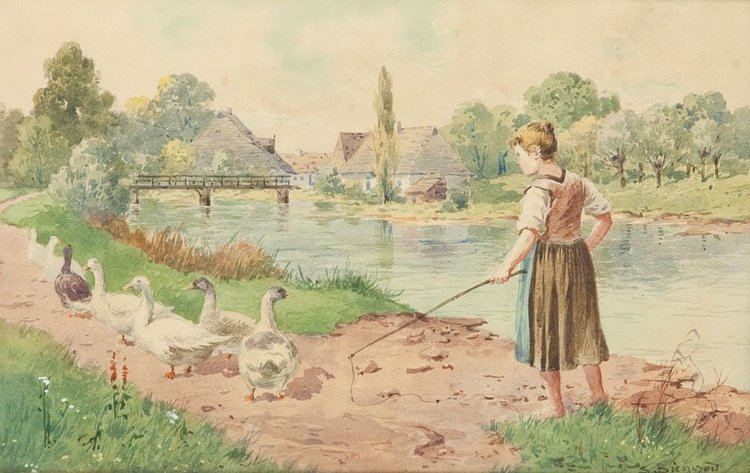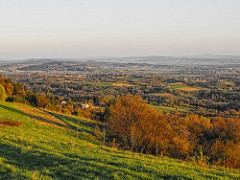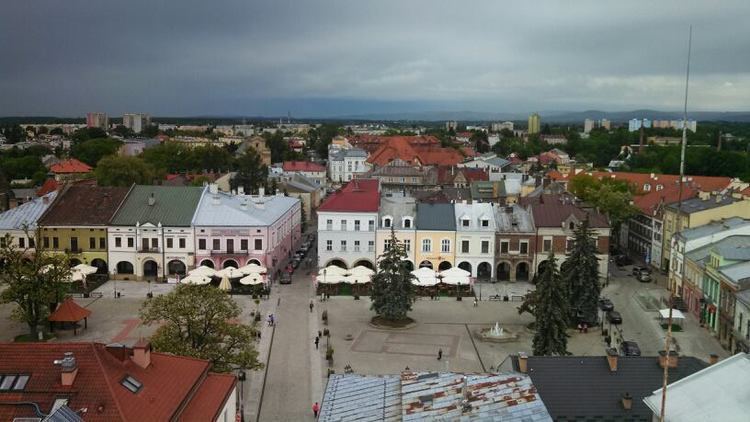Country Mayor Piotr Przytocki | Area 43.48 km2 | |
 | ||
Map of Krosno
Krosno [ˈkrɔsnɔ] (in full The Royal Free City of Krosno, Polish: Królewskie Wolne Miasto Krosno) is a town and county in Subcarpathian Voivodeship, Poland with 47,140 inhabitants (Metro: 115,617), as of 30 June 2014.
Contents
- Map of Krosno
- Krosno in poland poland travel tips
- Kseniya simonovasee you in krosno
- Geography
- History
- Tourism
- Education
- Politics
- Sport and Culture
- Economy
- Notable people
- Twin towns Sister cities
- References

Krosno is a medieval fortified town, a former Royal Free Town, a centre of cloth, linen, canvas, baize and Hungarian wine trade. Until recently it was a provincial capital. Today it is a medium-sized settlement, which ranks 6th among Polish towns with the best living conditions.

Center of regional and subregional levels. The seat of several institutions of supra-local: Regional Directorate of State Forests, Subcarpathian Provincial Veterinary Inspectorate, the District Election Commission, the Court and the Prosecutor's Office of the District, the District Mining Office, Regional Centre Road, the Sub-Carpathian Regional Hospital, Subcarpathian Center for Teacher Education, the Customs Office, the Institute of Oil and gas and Sucha Góra TV Tower.
Notably Krosno is the site of the first oil well (or "mine") in the world.
Krosno in poland poland travel tips
Kseniya simonovasee you in krosno
Geography
Krosno is on the river Wisłok. Slovakia is about 35 kilometres (22 mi) south, and Ukraine is about 85 kilometres (53 mi) east of the city. It is located in the heartland of the Doły (Pits), and its average altitude is 310 metres (1,020 ft) above sea level, although there are some hills located within the confines of the city.
Neighbouring municipalities are: Korczyna, Krościenko Wyżne, Miejsce Piastowe, Chorkówka, Jedlicze, and Wojaszówka.
Situated in the Subcarpathian Voivodeship (since 1999), previously it was the capital of Krosno Voivodeship (1975–1998). It is the capital of Krosno County.
Krosno covers an area of 45 km2 (17 sq mi), and has seven separate town quarters and 5 housing estates. The historical centre is situated on a hill between the fork of the Lubatówka and Wisłok Rivers (tributary of the San River).
History
The first mention of the town, which names Krosno as one of 34 estates in Małopolska (Lesser Poland) granted to the Lubusz (German: Lebus) Bishopric, appears in a document signed by Leszek II the Black, Duke of Kraków, in 1282. However, the oldest traces of settlement in the fork of the Wisłok and Lubatówka Rivers, found during archaeological research, date back to the 10th and 11th centuries.
Today it is difficult to clearly determine the etymology of the place-name of Krosno. Scholars give several versions explaining the origin of the name. Some researchers thought that the name is connected with "weaving loom" (in Polish: krosno), while others traced it back to "pustules", "pimples" or "being pimply" (in Polish: krosta, krostowatość), which apparently reflected the bumpy shape of the area where the first settlement was founded. Finally an opinion was adopted that the original Polish name disappeared and the existing name is the result of a transformation of the German (see: Walddeutsche) name "Krossen".
The date of the first foundation charter of the town is not known though we may presume that the oldest preserved royal document of Casimir the Great, dating from 1367, regarding the sale of the Krosno aldermanship, was modelled on an earlier foundation act. Hence it should be assumed that about the middle of the 14th century, King Casimir transformed Krosno from a settlement into a town chartered according to the Magdeburg rights and brought in numerous groups of German settlers.
Krosno, a royal town from its origin, used the coat of arms of the Piasts from Kujawy (half an eagle and half a lion with a crown over their heads) and, owing to the king's foundation, was surrounded with a defensive wall as early as the 14th century. During the reign of Casimir III the Great the construction of stone fortifications was begun to encircle the hill. But it was only under King Ladislaus Jagiello that the full-length stone and partly earth town fortifications were completed. Two gates led into the town: the Hungarian one from the south-east and the Kraków one from the north-west. The well-fortified and secure town provided perfect conditions for the development of craft and trade. The statutes of the butchers guild were known as early as 1403 and in the middle of the 15th century the guilds of bakers, shoemakers, tailors, blacksmiths as well as clothiers and fullers were constituted. Krosno became an important production centre of cloths and fustians.
The medieval town had waterworks and a sewage system, which is evidence of its importance and the wealth of its inhabitants. The privilege granted by King Casimir IV Jagiellon in 1461 shows that Krosno, next to Kraków and Lwów, was the third town in the Kingdom of Poland with such facilities. The archaeological research conducted recently, based on the dendrochronological method, enabled scholars to move the date of the system's installation back to the middle of the 14th century. The pipe-line master dealt with repairs and maintenance of the whole water-supply and sewage systems. From the research conducted by the Krosno archaeologists it appears that the system was used until the beginning of the 19th century.
The 15th century meant the beginning of commerce development for Krosno. Apart from local trade during weekly Monday fairs the town participated in a large-scale import-export and transit commerce. The main trade routes led to the Red Ruthenia, Hungary and the countries of southern Europe. The largest transactions were made during yearly fairs held three times a year. The trade was mainly in local cloths and baizes, horses, cattle, copperware and imported commodities made of copper and iron, and obviously, in Hungarian wine, on which several Krosno merchant families made fortunes. The first Jews to settle in Krosno were the brothers Nechemia and Lazar of Regensburg in Germany who received special permits from the Polish King, Wladyslaw Jagiello in the 15th century.
In spite of natural disasters (flood in 1497, the fire of a suburb in 1474 and of the town in 1500), Thomas Tarczay's troops raids (1473 and 1474), pestilence, which nearly depopulated the town, the 16th century was the most favourable for the development of Krosno. The town had its own bleachery, fullery, brickyard, flour mill, municipal baths, it enjoyed the royal privilege for limestone excavation, it had the customs chamber and the right of storage of commodities. High standards of living in Krosno, called at that time parva Cracovia, resulted partially from the activity of the local parish school. In the years 1400-1600 173 natives of Krosno studied in the Kraków Academy, which is evidenced by the entries in Album studiosorum.
Krosno of the 16th century was renowned not only for the wealth of its inhabitants, thrift and wide commercial contacts. It was also one of the most populous towns in the province of Lesser Poland: the population is estimated at about 4 thousand. The view of Krosno was included in the work of J. Braun and F. Hoghenberg entitled ‘The Towns of the World’, published in Cologne in 1617 or in Andreas Cellarius's work entitled ‘Regin Poloniae Magnique Ducatus Lithuaniae omniumque regionum subiectorum novissima descriptio’, published in Amsterdam in 1659.
At the beginning of the 17th century there were about 11 collective guilds in which craftsmen representing 79 production and service trades were associated. Apart from traditional specialities connected with basic functions of the town there were also goldsmiths, painters, comb-makers, armourers, pavers, leather-dressers, violin makers and soapboilers. But it was commerce that provided the town with most revenues, both from goods exchange and from services for visiting merchants. Local clerks, scribes, innkeepers, brewers, and even townspeople providing accommodation and letting shops and cellars earned a lot. Higher donations were given to the clergy for church expenses. At that time many Hungarian merchants settled in Krosno, mainly those trading in wine. Scots, who specialised in large-scale commerce, also came to stay and the most outstanding person among them was Wojciech (Adalbert) Portius. There were also Armenians and Ruthenians from Lwów, but the most numerous group of traders were Jews, although Krosno had a privilege ‘de non tolerandis Judeis’, barring Jews from residing and trading within the city walls. Jewish traders living in nearby townships of Korczyna, Rymanów or Dukla were frequently jailed and their wares confiscated for attempting to enter Krosno.
The middle of the 17th century witnessed the beginning of a gradual loss of the earlier position of the town. Natural disasters, raids of the Swedish, Transylvanian, and Tartar troops, pestilences and war requisitions brought Krosno to a desperate state at the end of 17th century. In the time of the partitions of Poland and under the Austrian rule, once rich and importance, the town experienced a period of severe impoverishment. It became one of many small towns of Galicia. Weaving was the only handicraft which enjoyed prosperity at that time. Large-scale flax and hemp plantations provided work for many weaving shops near Krosno. Korczyna and Kombornia were the strongest centres of this industry but there were thousands of home weaving shops in the vicinity of Krosno.
It was not until the middle of the 19th century, the period of the Galician autonomy from 1867 to the outbreak of the World War I, that Krosno started to rise from the decline. The birth of Polish oil industry undoubtedly contributed to the notable and rapid increase of importance of the town. The first oil company started by Ignacy Łukasiewicz, Tytus Trzecielski and Karol Klobassa in 1856 and the refinery they erected in Chorkówka caused gradual inflow of foreign capital. As a results of the new administrative division the Krosno district (powiat) was established and in 1867 Krosno became the seat of the offices of the district authorities (starostwo). At the turn of the 20th century many societies, schools and institutions were established in the town: Loan Society, Nationwide Weaving School, Teacher Training School, Real Secondary School, "Zgoda" (Accord) Townspeople's Society, "Sokół" (Falcon) Gymnastic Society, Bleach and Finish Plant, an oil refinery, the First Domestic Factory of Tower Clocks. This state of relative progress lasted until the outbreak of World War I.
During the war Krosno Suffered serious damages. The inhabitants of the town, bombed and looted several times, suffered both from the Austrian and the Tsarist troops. In the period between the wars Krosno evolved gradually into an important industrial centre: a licence was issued to establish a flax straw breaking plant and a linen weaving plant, in the 1920s Polish Glass Factory, Joint-Stock Company was set up, in 1928 the construction of the airfield was begun and the aviation school was moved to Krosno from Bydgoszcz, in the 1930s the hangars were erected. The prosperous development of Krosno was interrupted by World War II. The machinery and equipment of the glass factory, the refinery and the flax processing plant were stolen or devastated. The Krosno industry was completely ruined.
German occupation lasted from 8 September 1939 to 11 September 1944. In September 1944, almost immediately after liberation, the reconstruction of the industry, destroyed during World War II, began. The glass factory and the flax plant were put into operation. Later on research in geology and oil drilling began, "Polmo" Shock Absorbers Factory and Transport and Aircraft Equipment Factory (WSK) were set up. Oil industry was and still is of importance for the town. Oil Industry Engineering Institute, "Naftomet" Oil Drilling Equipment Factory, Oil Drilling Establishment and "Naftomontaż" enterprise ( assembling oil drilling equipment on oil fields) are organizations which continue the oil industry traditions of the region.
Tourism
Due to a continuously rising number of travelers from Poland and abroad, the town authorities, in 2016, launched a website for tourists (available in English): visitkrosno
Some of Krosno highlights are:
In the nearest neighbourhood:
Education
Politics
The Krosno constituency includes several other smaller cities.
Sport and Culture
Several cultural and sporting events on local, national and international scale are held in the town. Culture is celebrated by the Krosno Days of Music, the theatrical Encounters, the Musical Spring, the Krosno Fairs, the Galicia Festival, reviews of children theatres, hiker's songs and poetry singing festivals, the "Kontakt" Euro-Regional Fair, the "Soli Deo Gloria" Euro-Regional Concerts of Christmas Carols. Every two years Krosno hosts the National Biennial of Photography "Krosno - Town and People", International Biennial of Artistic Linen Tapestry "Z Krosna do Krosna", Biennial of Krosno Plastic Arts. Fans of sports throng to international volleyball and basketball tournaments organized annually, the International Mountain Ballooning Contest, the National Tournament of Ballroom Dancing for the Podkarpacie Cup. The band Decapitated hails from Krosno.
Economy
Krosno is located in an oil bearing region. Surface seepage of oil was locally used (unrefined) in lamps as early as the 16th century. In the 19th century Ignacy Łukasiewicz a local pharmacist began exploiting the deposits from hand-dug wells, years before the drilling at Titusville, Pennsylvania which is usually said to be the beginning of modern petroleum development.
One of the things that Krosno is well known for is the quality glassware and crystal that is produced in the town, and distributed throughout the world.
Notable people
Twin towns — Sister cities
Krosno is twinned with:
